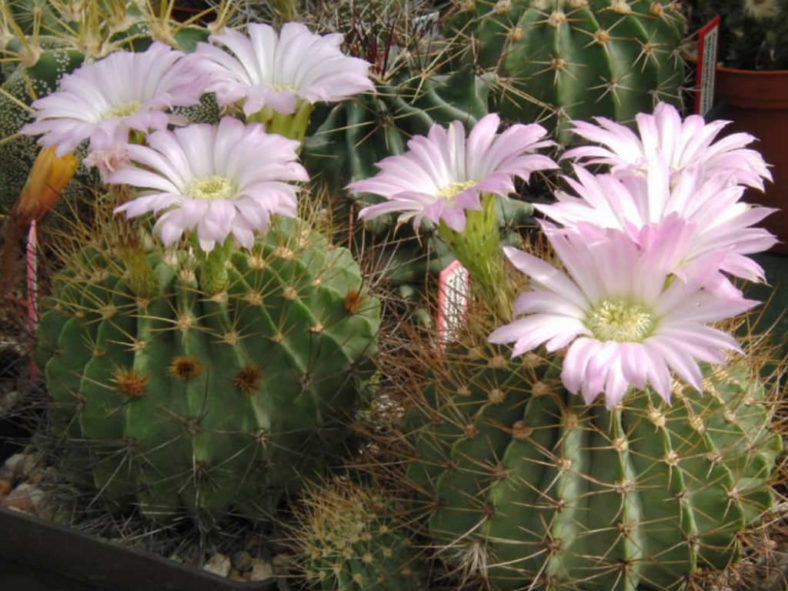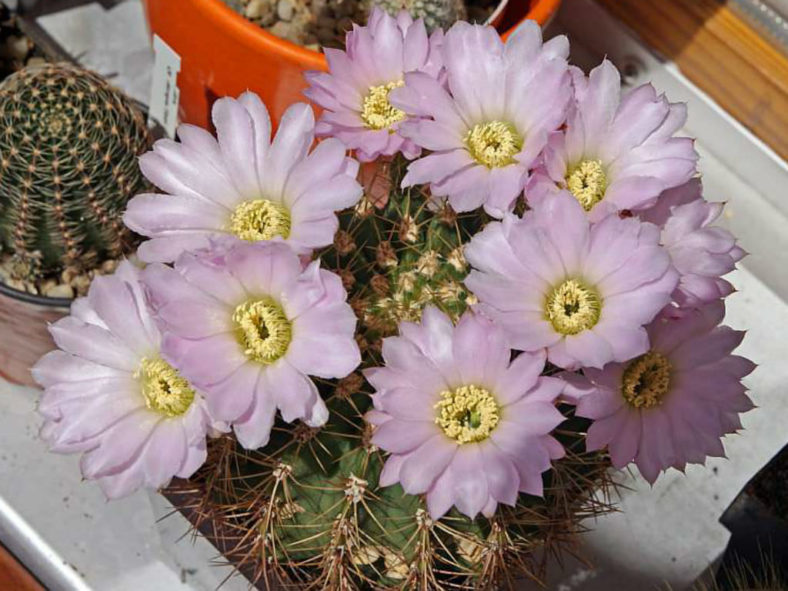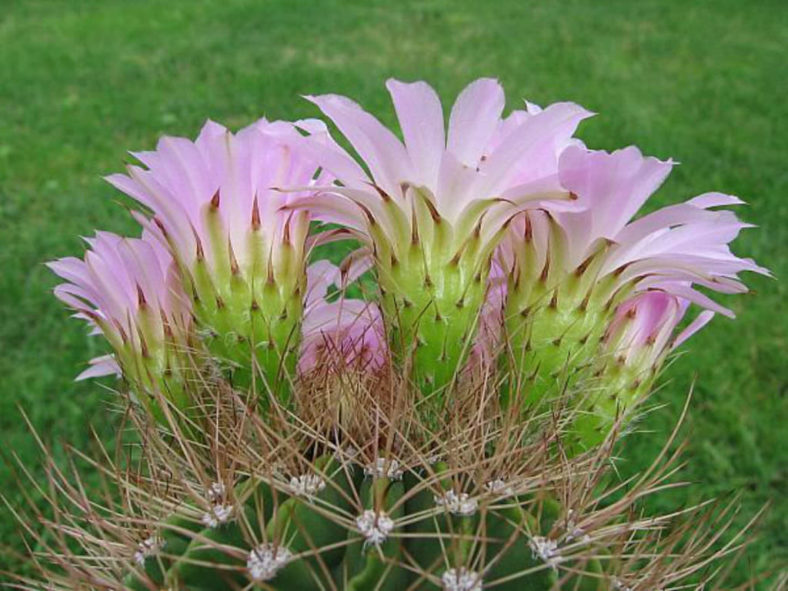Scientific Name
Acanthocalycium spiniflorum (K.Schum.) Backeb.
Synonym(s)
Echinocactus spiniflorus, Acanthocalycium violaceum, Echinopsis spiniflora, Echinopsis violacea, Lobivia spiniflora
Scientific Classification
Family: Cactaceae
Subfamily: Cactoideae
Tribe: Trichocereeae
Genus: Acanthocalycium
Etymology
The specific epithet "spiniflorum" (pronounced "spin-ih-FLOR-um") means "having spiny flowers" and refers to the scales on the flower tube of this species.
Origin
Acanthocalycium spiniflorum is native to Argentina (Cordoba).
Description
Acanthocalycium spiniflorum is a small cactus with globular stems that become cylindrical with age. It usually grows solitary but may offset at the base with age. The stems can reach up to 6 inches (15 cm) in height and 4 inches (10 cm) in diameter. The spines are yellowish to brown with dark tips, becoming grey with age, and can grow up to 1.6 inches (4 cm) long. Each areole bears 10 to 20 spines.
The showy flowers are erect, funnel-shaped, and can reach up to 2 inches (5 cm) in length and 1.6 inches (4 cm) in diameter. They range from white to pinkish-lilac and appear in the summer.

How to Grow and Care for Acanthocalycium spiniflorum
Hardiness: USDA hardiness zones 9b to 11b: from 25°F (−3.9 °C) to 50°F (10°C).
Overall, these are attractive cacti for dish gardens or indoor displays. A collection of them is especially attractive, as they look like a collection of balls tossed upon the ground. However, it is crucial never to expose these cacti to prolonged periods of water or high humidity. They will suffer from rot in the presence of moisture. In addition, Echinocactus are vulnerable to pests, including aphids, mealybugs, scale, and whitefly. Identify the infestation as early as possible and treat it with the least toxic option.
It is best to repot at the beginning of the growing season, typically in the summer. To repot a cactus, ensure the soil is dry before repotting, then gently remove the pot. Knock away the old soil from the roots, removing any rotted or dead roots. Treat any cuts with a fungicide. Place the plant in its new pot and backfill it with potting soil, spreading the roots as you repot. Leave the plant dry for a week or so, then begin to water lightly to reduce the risk of root rot.
Learn more at How to Grow and Care for Echinocactus.
Links
- Back to genus Acanthocalycium
- Succupedia: Browse succulents by Scientific Name, Common Name, Genus, Family, USDA Hardiness Zone, Origin, or cacti by Genus
Photo Gallery
Click on a photo to see a larger version.


